Showing Spotlights 945 - 952 of 2877 in category All (newest first):
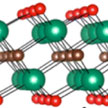 Next-generation electronics will be based on two-dimensional semiconductors, which have a significantly higher resistance than conventional silicon-based electronics. This development is significantly limited by the high contact resistance between the metal electrode and the 2D semiconductor. To minimize the energy dissipation and improve the device performance, it is critical to reduce the contact resistance. Researchers have now shown that MXenes, a class of 2D metal carbides or nitrides, can achieve low contact resistance with 2D semiconductors.
Next-generation electronics will be based on two-dimensional semiconductors, which have a significantly higher resistance than conventional silicon-based electronics. This development is significantly limited by the high contact resistance between the metal electrode and the 2D semiconductor. To minimize the energy dissipation and improve the device performance, it is critical to reduce the contact resistance. Researchers have now shown that MXenes, a class of 2D metal carbides or nitrides, can achieve low contact resistance with 2D semiconductors.
Feb 22nd, 2017
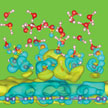 Researchers have shown that evaporation from the surface of a variety of nanostructured carbon materials can be used to generate electricity: the evaporation driven water flow in nanoporous carbon film converts ambient thermal energy into electricity via the water molecules' interaction with the carbon material. The team fabricated their device from a sheet of carbon black and two electrodes made from multi-walled carbon nanotubes. When inserted into deionized water, an open-circuit voltage between the two electrodes is generated.
Researchers have shown that evaporation from the surface of a variety of nanostructured carbon materials can be used to generate electricity: the evaporation driven water flow in nanoporous carbon film converts ambient thermal energy into electricity via the water molecules' interaction with the carbon material. The team fabricated their device from a sheet of carbon black and two electrodes made from multi-walled carbon nanotubes. When inserted into deionized water, an open-circuit voltage between the two electrodes is generated.
Feb 21st, 2017
 Paper electronics - putting flexible electronic sensors and other circuits on regular paper - have the potential to cut the price of a wide range of medical tools, from point-of-care diagnostic tests to portable DNA detectors. In new work, researchers have now shown an integration strategy to rationally design an ultra-low cost health monitoring device, a Paper Watch, using recyclable household materials: non-functionalized papers.
Paper electronics - putting flexible electronic sensors and other circuits on regular paper - have the potential to cut the price of a wide range of medical tools, from point-of-care diagnostic tests to portable DNA detectors. In new work, researchers have now shown an integration strategy to rationally design an ultra-low cost health monitoring device, a Paper Watch, using recyclable household materials: non-functionalized papers.
Feb 16th, 2017
 Metal-organic frameworks (MOFs) are regarded as a new class of porous materials with significant prospects for addressing current challenges pertinent to energy and environmental sustainability. Due to their unique structure design and tunability, MOFs offer great potential for their effective integration and exploration in various sensing applications. Researchers have demonstrated this by developing an advanced sensor for the detection of hydrogen sulfide at room temperature, using thin films of rare-earth metal based MOF.
Metal-organic frameworks (MOFs) are regarded as a new class of porous materials with significant prospects for addressing current challenges pertinent to energy and environmental sustainability. Due to their unique structure design and tunability, MOFs offer great potential for their effective integration and exploration in various sensing applications. Researchers have demonstrated this by developing an advanced sensor for the detection of hydrogen sulfide at room temperature, using thin films of rare-earth metal based MOF.
Feb 10th, 2017
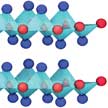 Researchers have demonstrated that nanoengineered SnO anodes suppress volume change and prolong sodium ion battery cycle life. Sodium ion batteries are promising alternative to lithium ion batteries, particularly for home based and grid level storage solutions. Tin monoxide has been demonstrated to have excellent physical and chemical properties and has a large theoretical capacity as battery anode, for instance for sodium ion batteries. Unfortunately, though, it also exhibits large volume change during the sodiation and lithiation process, which makes it unsuitable as a high-performing anode material.
Researchers have demonstrated that nanoengineered SnO anodes suppress volume change and prolong sodium ion battery cycle life. Sodium ion batteries are promising alternative to lithium ion batteries, particularly for home based and grid level storage solutions. Tin monoxide has been demonstrated to have excellent physical and chemical properties and has a large theoretical capacity as battery anode, for instance for sodium ion batteries. Unfortunately, though, it also exhibits large volume change during the sodiation and lithiation process, which makes it unsuitable as a high-performing anode material.
Feb 9th, 2017
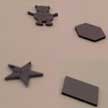 Researchers have developed a highly manufacturable deep reactive ion etching based process involving a hybrid soft/hard mask process technology that shows high aspect ratio complex geometry Lego-like silicon electronics formation enabling free-form (physically flexible, stretchable, and reconfigurable) electronic systems. This hybrid mask enables deep sub-millimeter etching while preserving existing devices and structures and is advantageous for many applications, including lego like concept for pre-packaging modules/system integration.
Researchers have developed a highly manufacturable deep reactive ion etching based process involving a hybrid soft/hard mask process technology that shows high aspect ratio complex geometry Lego-like silicon electronics formation enabling free-form (physically flexible, stretchable, and reconfigurable) electronic systems. This hybrid mask enables deep sub-millimeter etching while preserving existing devices and structures and is advantageous for many applications, including lego like concept for pre-packaging modules/system integration.
Feb 6th, 2017
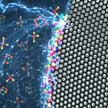 Researchers have successfully demonstrated a facile but effective regulation strategy to render uniform Li deposits by incorporating fluoroethylene carbonate additives. This addresses an issue where safety and uniform deposits of Li ion are critical issues for promoting the practical application of metallic Li as anode for post Li-ion batteries, including rechargeable Li-S, Li-air batteries, and even Li metal batteries which utilize intercalation compounds as cathodes.
Researchers have successfully demonstrated a facile but effective regulation strategy to render uniform Li deposits by incorporating fluoroethylene carbonate additives. This addresses an issue where safety and uniform deposits of Li ion are critical issues for promoting the practical application of metallic Li as anode for post Li-ion batteries, including rechargeable Li-S, Li-air batteries, and even Li metal batteries which utilize intercalation compounds as cathodes.
Jan 30th, 2017
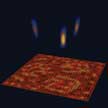 Compact optical components are crucial to realize miniaturized optical systems and integrated optoelectronic devices. Plasmonic metasurfaces - structured materials in 2D with rationally designed, subwavelength-scale building blocks - have drawn great interest because they can control light based on subwavelength structures. These planar devices are attractive for applications ranging from high resolution imaging to 3D holography. New work describes the design and prototyping of single-crystalline TiN plasmonic metasurfaces based on subwavelength hole arrays.
Compact optical components are crucial to realize miniaturized optical systems and integrated optoelectronic devices. Plasmonic metasurfaces - structured materials in 2D with rationally designed, subwavelength-scale building blocks - have drawn great interest because they can control light based on subwavelength structures. These planar devices are attractive for applications ranging from high resolution imaging to 3D holography. New work describes the design and prototyping of single-crystalline TiN plasmonic metasurfaces based on subwavelength hole arrays.
Jan 27th, 2017
 Next-generation electronics will be based on two-dimensional semiconductors, which have a significantly higher resistance than conventional silicon-based electronics. This development is significantly limited by the high contact resistance between the metal electrode and the 2D semiconductor. To minimize the energy dissipation and improve the device performance, it is critical to reduce the contact resistance. Researchers have now shown that MXenes, a class of 2D metal carbides or nitrides, can achieve low contact resistance with 2D semiconductors.
Next-generation electronics will be based on two-dimensional semiconductors, which have a significantly higher resistance than conventional silicon-based electronics. This development is significantly limited by the high contact resistance between the metal electrode and the 2D semiconductor. To minimize the energy dissipation and improve the device performance, it is critical to reduce the contact resistance. Researchers have now shown that MXenes, a class of 2D metal carbides or nitrides, can achieve low contact resistance with 2D semiconductors.
 Subscribe to our Nanotechnology Spotlight feed
Subscribe to our Nanotechnology Spotlight feed





